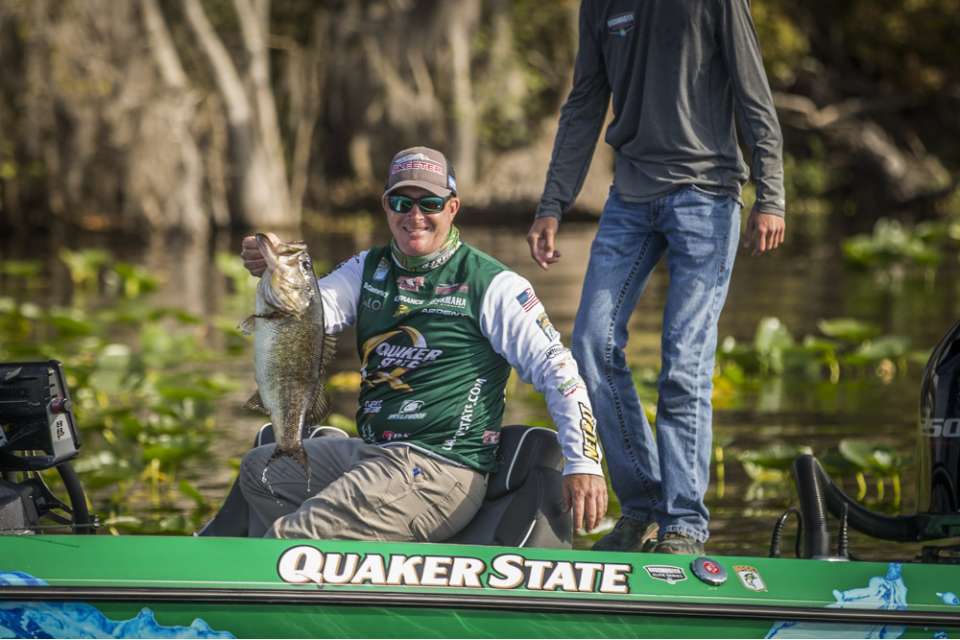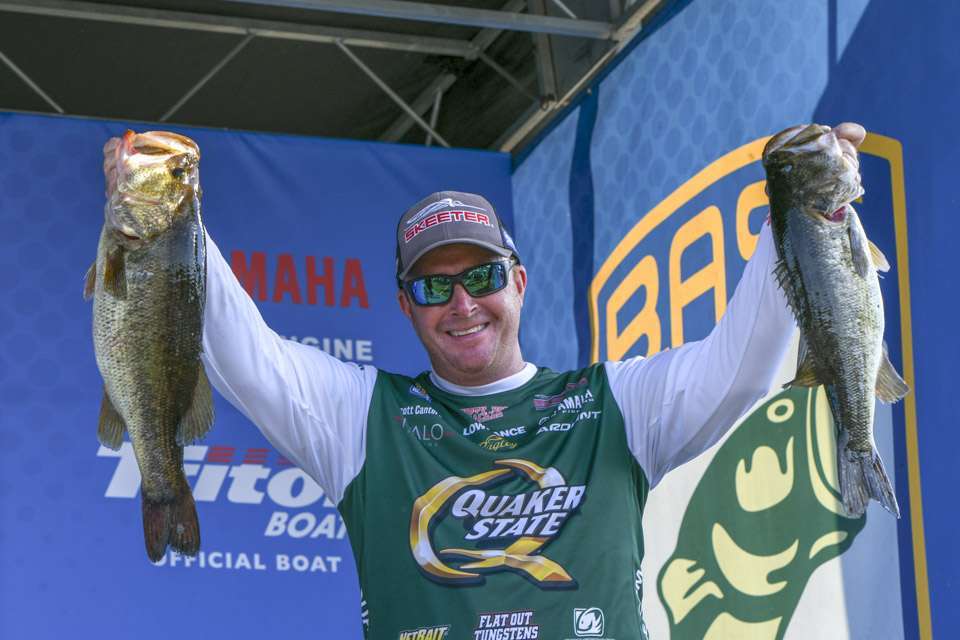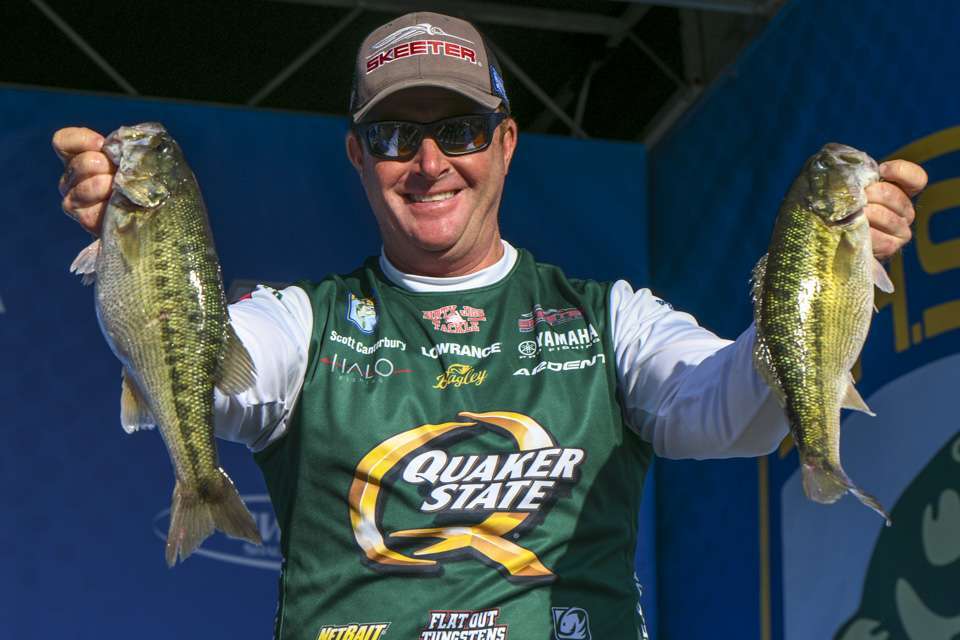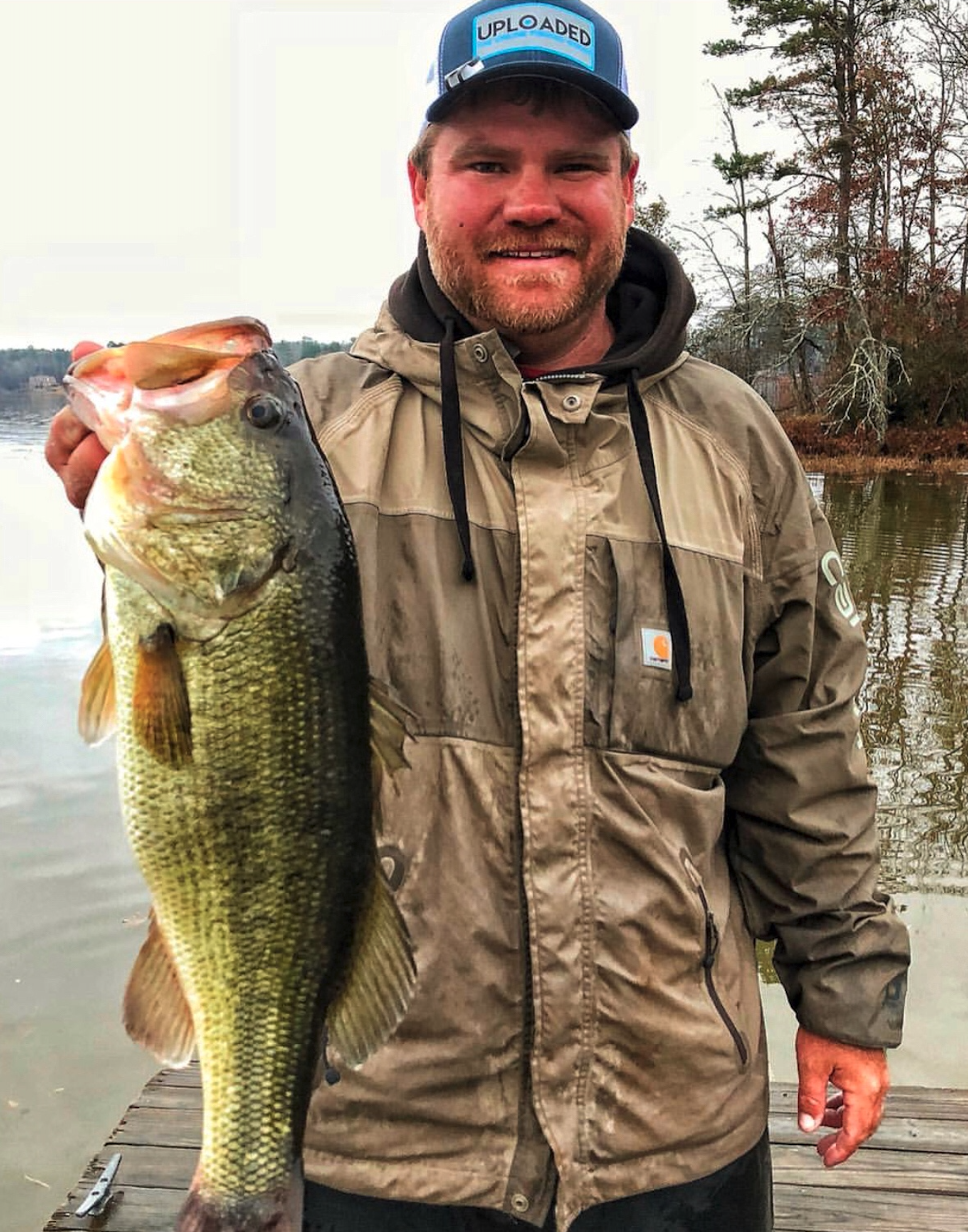
This is the first installment in a five-part series retracing the steps that led Elite Series pro Scott Canterbury to his first Bassmaster Angler of the Year title in 2019. We begin with the first stops of the season.
Achieving greatness is rare, and typically only attainable down a long and winding road. Bassmaster Elite Series pro Scott Canterbury achieved greatness by becoming the 2019 Toyota Bassmaster Angler of the Year, and his road was fraught with the ups and downs and twists and turns every other angler faces on the way to glory. This is the first installment in a five-part series looking back at Canterbury’s journey to the top through the 10 events that comprised the 2019 Bassmaster Elite Series.
Of the 10 fisheries along the 2019 Elite Series schedule, Canterbury only had prior experience at half of them when the schedule was announced. The five fisheries unknown to him at the time were the St. Johns River, Winyah Bay, the St. Lawrence River, Cayuga and Tenkiller. Prior to the off-limits periods, Canterbury spent a two days riding both the expansive St. Johns River and Winyah Bay, but hardly fished, and never caught a keeper at either location during those times.
He also spent a couple days on both Cayuga Lake and the St. Lawrence River prior to the off limits for those events but was absent the opportunity to do the same at Tenkiller. That particular event was unique because the Fort Gibson tournament was moved to Tenkiller after the off limits had already begun due to flooding on the aforementioned Fort Gibson.
In looking at the road map to the top of the mountain at the start of the season, Canterbury saw anything but a straight and clear path.
“AOY is a goal we all set at the beginning of the season,” Canterbury said. “But it’s the kind of goal where you’re not disappointed at the end of the year if you don’t reach it. And you don’t even really think about it at much early in the year because so much can happen.”
St. Johns River
Practice was tough for Canterbury along with the majority of the field leading up to the 2019 Elite Series opener. Warm weather had the air feeling right, but the water temps were still playing catchup.
“After practice, nobody expected the tournament to go as well as it did,” he said.
During practice, Canterbury had found a few shellbars where prespawn fish were staging. He also had a few bites flipping in Rodman Reservoir. By the start of the event, he thought he’d be able to piece together 12 pounds a day on lipless crankbaits, and perhaps cull up by punching grass mats.
However, a rare off day between practice and competition was scheduled for the Elite Series preseason meeting. That day was accompanied by another heavy dose of sunshine, which was needed to set the spawn in motion and set the fishery on fire.

“The first day I went to the shellbeds and caught a couple, but not as many as I did in practice. So, I ran and locked through into Rodman where I had a few big bites while flipping.”
But those fish were likely staging as well since Canterbury only caught one bass in 4 hours. He locked back through and ran back to his shellbeds. He ended up scratching together around 12 pounds the first day. However, the 12-pound benchmark he thought would be decent in practice suddenly had him sitting below the middle of the pack.
Still, Canterbury felt like if he went back out and caught 15 pounds the next day he’d be able to move up to the Top 35 and make the cut. But that bite had been much tougher on Day 1. Where he’d get multiple bites on a shellbed in practice, he was only getting one, if any at all. Canterbury knew things were changing.
“I was tied up to the dock on Day 2 waiting to blast off. They were playing the national anthem and as soon as it was over, I told my Marshal, ‘Man, this isn’t going to work.’”
“The only two rods I had out were both rigged with lipless crankbaits. I went up to the front deck, put them back in the rod locker and pulled out one flipping stick. I thought, ‘I’m just going to go flip all day and if I get two bites that weigh 10- or 12-pounds, that’s just as good as throwing that lipless crankbait all day.’”
Canterbury pulled into an area around 9:30 where he had had two bites during practice, and the decision to switch things up quickly paid off.
“In 20 minutes, I had 20 pounds, and in 45 minutes I had 26 pounds,” he said. “Then I just backed off because all of that had happened in one little bitty area. That was the moment that changed everything. It started the whole season off right. Without making that decision, I never would have been in contention for AOY, wouldn’t have won it, nothing.”
The next day he returned to the same spot and in 2 hours had another 31 pounds. Canterbury rode that decisive Day 2 move all the way to a ninth-place finish. Though that decision did start Canterbury rolling in the right direction, however, one good decision does not an AOY make. There were still many dangerous waters to navigate, figuratively speaking, for the most part, and a couple of literal ones as well.
Lake Lanier
Canterbury left the St. Johns River with a full head of steam and a belly full of confidence. But that wasn’t only due to his recent gut decision and ninth-place finish; he also had a ton of experience on Lake Lanier.
“The very first day of practice I get together a little pattern fishing a shaky head and Ned rig on clay points and brush,” he said.
Expanding on that pattern was a little difficult however due to fog.
“I have never fished anywhere that was as foggy as Lanier was in practice. The fog never lifted in two and a half days. I’d hear boats running 200 yards from me at 1 o’clock during the day, and I’d never even see them. So, it was sort of sketchy trying to run around and figure stuff out.”
On the heels of a lukewarm practice, Canterbury felt fairly confident he could put together 12 to 14 pounds fishing the shaky head and Ned rig.

“Sure enough, by about 11 o’clock or so on Day 1, I had about 12 pounds.”
But his bag consisted of “just five good keepers.” The fog had finally lifted, and it was time to run a little history. Canterbury ran out to where he had caught better fish in the past — deep, long running points and main-lake humps on the lower end of the lake.
“I was throwing a little swimbait on a 3/8-ounce head with 6-pound test on a spinning rod. Stuff I don’t do much,” Canterbury said.
He started in 60 feet of water and worked his way in. He got a bite and missed it in about 40 feet, and two casts later he caught a 4 1/2-pounder.
“I didn’t even catch a fish doing that in practice. I mean, I knew it was a deal there and I knew a lot of areas where it would work because of the history that I had there, but that was definitely the bite that keyed me in for the week. About an hour later I caught another 4-pounder. And every day my big fish came that way; deep on those long points fishing that swimbait really slow.”
Canterbury finished 11th, barely missing the Top 10 final-day cut. He was making good decisions; his confidence was building and the near miss of another day of competition had him hungrier than ever. But the year is still young at this time, and he was just starting up the mountain.
Follow Canterbury’s full season:
Part 1
Part 2
Part 3
Part 4
Part 5

